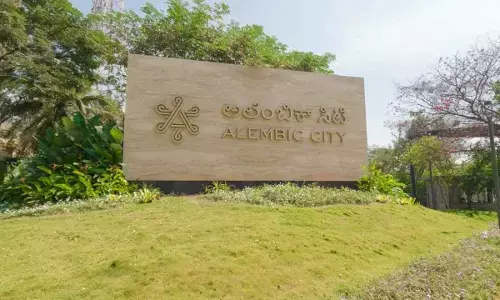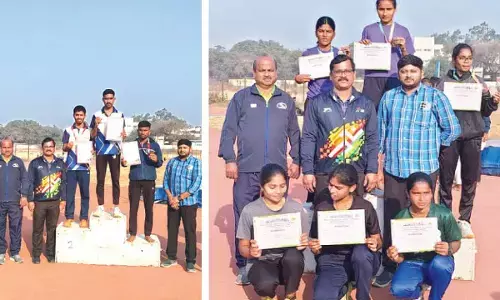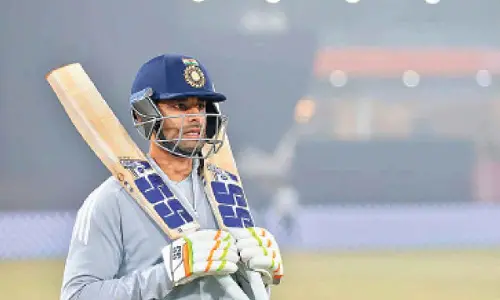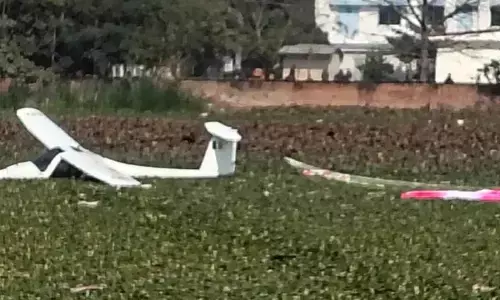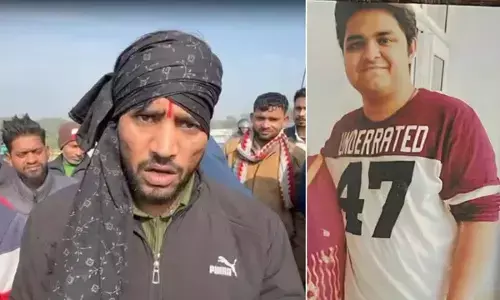Budding bureaucrat's dates with disasters

Budding bureaucrat’s dates with disasters
That was when the Governor thought of establishing an organisation in the Raj Bhavan, not merely for the post -cyclone activities currently on, but also generally to take up rural development activities
That was when the Governor thought of establishing an organisation in the Raj Bhavan, not merely for the post -cyclone activities currently on, but also generally to take up rural development activities. The idea was that the autonomous body would also be able to leverage institutional finance. Dr B Venkatappaiah, the legendary civil servant who had played a historical role in the process of revamping and resurrecting the rural credit sector in India, suggested the name 'Chetana' for the proposed organisation.
One of the significant activities with which nascent 'Chetana' started its life was the organisation of a workshop in rural development attended by such distinguished luminaries as Dr Y Nayudamma and Dr V Kurien. I was given the privilege and honour of editing the proceedings thereof in a book named 'The Tinctured Canvas' (the name was actually suggested by Dr Nayudamma), which was very graciously published by Bharatiya Vidya Bhavan.
The organisation soon started to function actively and took up important relief and rehabilitation activities especially in Guntur district. Substantial assistance had also been received from the Tata Relief Committee (TRC) of which Mrs Moolgaonkar was the Chairman. I accompanied her and her team on a visit to the affected areas of Guntur district. Mrs Moolgaonkar, initially, was in a bit of a hurry to firm up the plan of action. Upon finding that her plan would have meant large investments on a small number of activities, and even that very capital intensive, I made a bold suggestion to her that the assistance provided by the TRC should be used to leverage institutional finance.
She was receptive to the idea and a project was drawn up for supplying mechanised boats at the rate of five families for each unit to help the affected fishermen rehabilitate themselves and find remunerative livelihoods. Necessary supporting infrastructure such as purchase arrangements by the Andhra Pradesh Fisheries Corporation (APFC), refrigerated transport and marketing, once again by the APFC, were also worked out. It was a very sensible and well thought out arrangement, although, over time, the whole scheme was unfortunately diverted by the Sarpanch of the village to his personal benefit. I came to know of that because I grew suspicious of the regular reports received from the district and the banks that repayments were regular and prompt. That should not normally have been the case when poor fishermen were involved, and the activity was seasonal and risky. Further investigations revealed that the Sarpanch had actually taken on the management of all the boats in the village using the fishermen, in effect, as workers! Given the arrangements we had already put in place and the economy of scale his ingenious plan offered, no wonder everything was working out well!
After a two-year stint in Raj Bhavan, I was posted as Collector of Krishna district where, again, through an organisation, I had started there (known as 'Anveshana'), and I continued my association with 'Chetana'.
It was nearly ten years later that I resumed my contact with the field of disaster management (except for the occasions when I was asked to accompany Central teams sent to the State in the wake of disasters). I was the Secretary, Agriculture and Corporation, in 1989, when a severe drought occurred in the State. By then, all arrangements had already been put in place for me to go for a very attractive scholarship in Harvard University. When I met Jayabharat Reddy, Chief Secretary at that time, to take leave of him on the eve of my departure, the discussion turned to the conditions in the State. When the Chief Secretary asked whether I was quite comfortable with the idea of going away in the prevailing situation, I promptly changed my mind, cancelled the programme, and started in the right earnest to get busy with the drought relief activities.
It was a common practice in the Ministry of Agriculture to ask a Joint Secretary to lead an inter-ministerial Central team to assess damages and to recommend assistance whenever a natural calamity occurred in the State and that State (or Union Territory) requested for Central assistance. Following a cloudburst that had caused extensive damage in Kinnaur district of Himachal Pradesh, I was asked to lead such a team. Upon reaching the village one found that the whole habitation had been razed to the ground. A sudden, intense and short-lived cloudburst at the top of a nearby hill had caused the formation of a massive body which hurled down and hit the village. Houses, offices and even the electric substation had all been completely flattened or washed away. And there were practically no survivors. It was a heartrending scene. But one had one's duty to do. After the visit was over, we went back to the guest house as a team, sat down, finished the report and recommended a generous quantum of assistance to be given by the government of India.
Senior colleague Valliappan was the Collector of Chittoor and the district was experiencing severe drought conditions. The then Chief Minister, P V Narasimha Rao had come on a visit. And, by the time the Chief Minister could undertake the inspection of the affected areas, pouring rain greeted him! A typical example of how delayed VIP visits turn infructuous, if not almost farcical!
The rain, in itself, was not unwelcome as the monsoon season had begun by then. In a manner of speaking, Narasimha Rao was like a modern day 'Bhagiratha' of Hindu mythology, who had brought the river Ganges down to earth!
(Concluded)
(The writer is former Chief Secretary, Government of Andhra Pradesh)Dr Mohan Kanda









